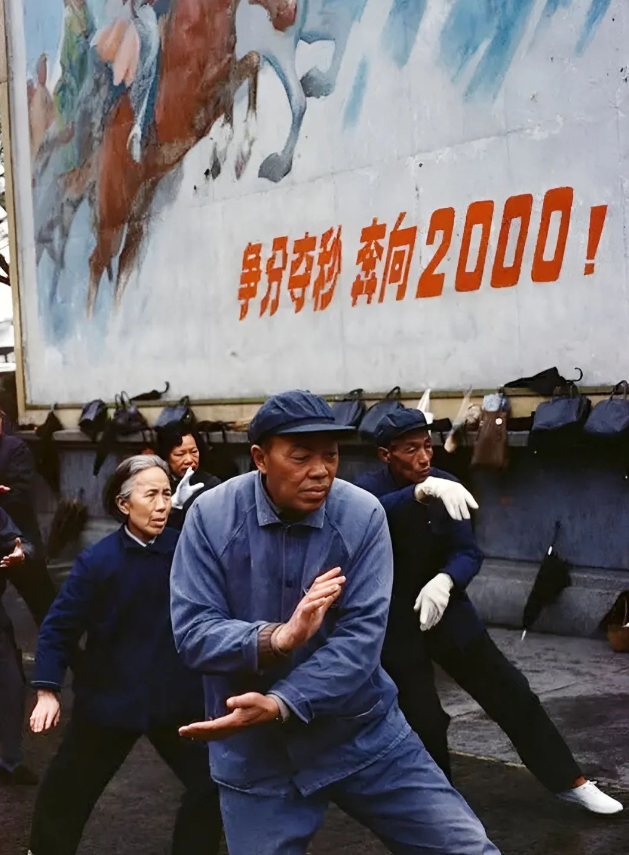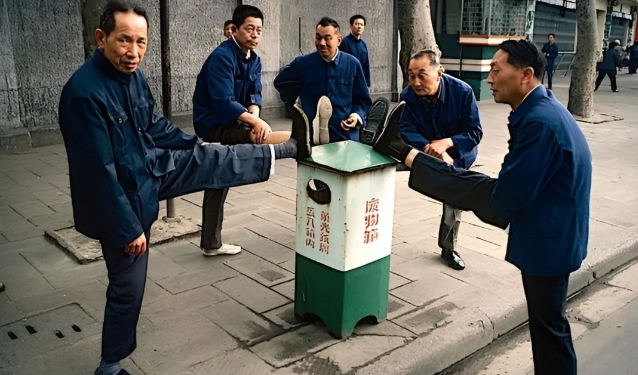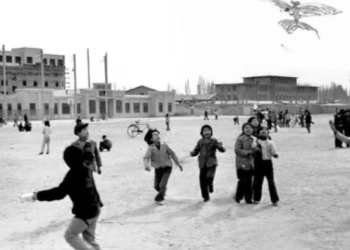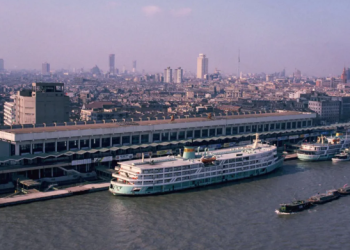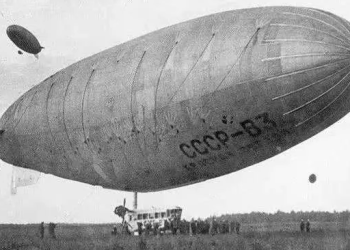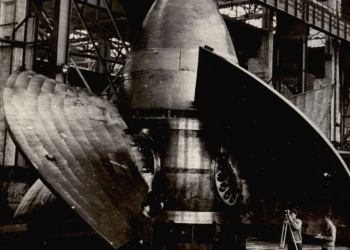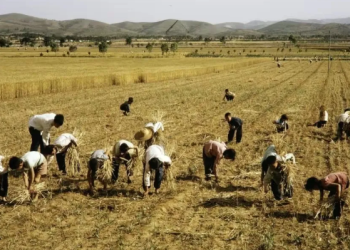Some say: To understand a century of Chinese history, look at Shanghai; to understand a millennium, look at Beijing.
Shanghai is a vivid microcosm of China’s modern history over the past hundred years. This rich and layered history adds a unique charm and deep cultural connotation to the city.
As the wheel of history rolled forward, time arrived at the 1980s. What changes took place in Shanghai—this international metropolis—during that era? And what was daily life like for the people living there?
In 1980, French photographer Bruno Barbey visited Shanghai. Departing from the then-mainstream black-and-white photography style, he insisted on using color film to capture and document what he saw in the city.
Through Barbey’s lens, the ancient alleys of Shanghai, its European-style buildings, and the everyday moments of its ordinary residents were all recorded with striking authenticity—images that still linger in memory and evoke endless reflection.
 In the 1980s, the bustling Nanjing East Road was filled with crowds of people coming and going. On the right side of the photo stood the “International Television Store.”
In the 1980s, the bustling Nanjing East Road was filled with crowds of people coming and going. On the right side of the photo stood the “International Television Store.”
Nanjing Road was one of the most prosperous commercial areas in Shanghai, home to more than 700 shops along the street.
 In the 1980s, a man rode a tricycle past the Shanghai Exhibition Center. At that time, there were still very few cars on the streets, and most people traveled by bicycle.
In the 1980s, a man rode a tricycle past the Shanghai Exhibition Center. At that time, there were still very few cars on the streets, and most people traveled by bicycle.
The Exhibition Center was built in the 1950s and features classic Soviet architectural style.

In the 1980s, Shanghai residents were lining up to buy food. A banner above the store entrance read “Negotiated Grain Counter.”
At that time, people needed ration coupons to purchase daily necessities—grain coupons, cloth coupons, oil coupons, and more.
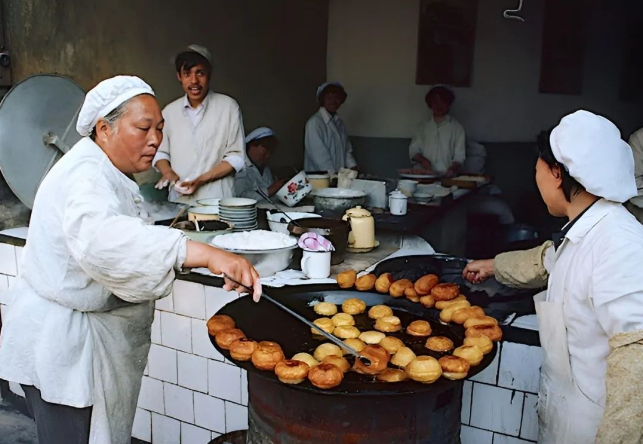 In the 1980s, a breakfast shop on a Shanghai street bustled with activity. Workers were busy preparing food, and the deep-fried delicacies in the pan were golden and crispy—enough to make anyone’s mouth water.
In the 1980s, a breakfast shop on a Shanghai street bustled with activity. Workers were busy preparing food, and the deep-fried delicacies in the pan were golden and crispy—enough to make anyone’s mouth water.
The warmth of everyday life is often the greatest comfort to ordinary people.
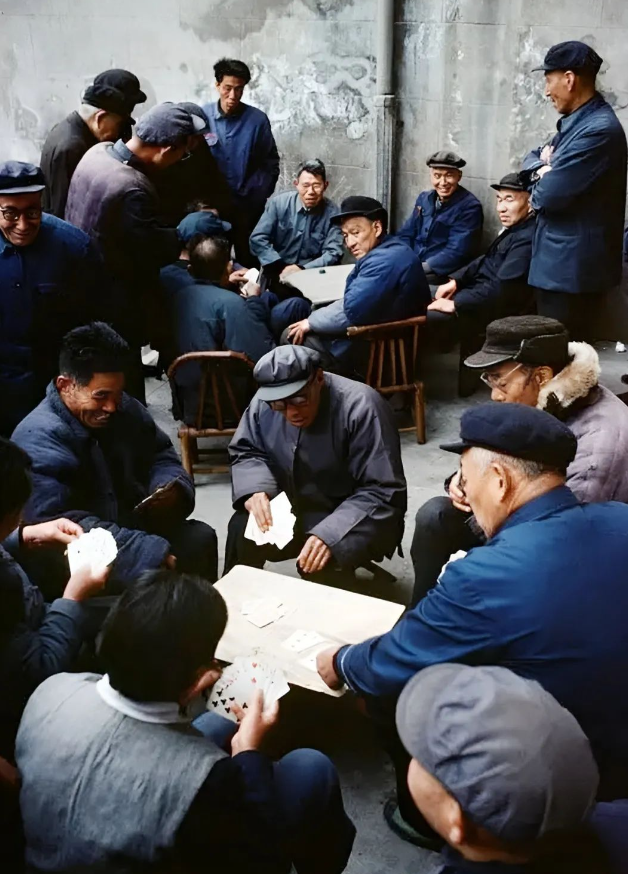 In the 1980s, in a small alleyway in Shanghai, many elderly people gathered to relax and enjoy simple pleasures together.
In the 1980s, in a small alleyway in Shanghai, many elderly people gathered to relax and enjoy simple pleasures together.
After a lifetime of hard work, their later years were lived freely and casually—doing whatever brought them joy.
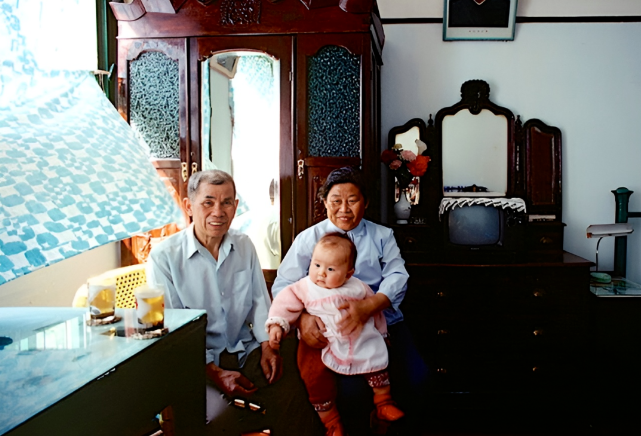 In the 1980s, an elderly couple in Shanghai posed for a photo while holding their adorable granddaughter.
In the 1980s, an elderly couple in Shanghai posed for a photo while holding their adorable granddaughter.
Behind them sat a 14-inch black-and-white television on the table.
The furnishings in the room were quite refined—clearly more sophisticated than those of an average household.
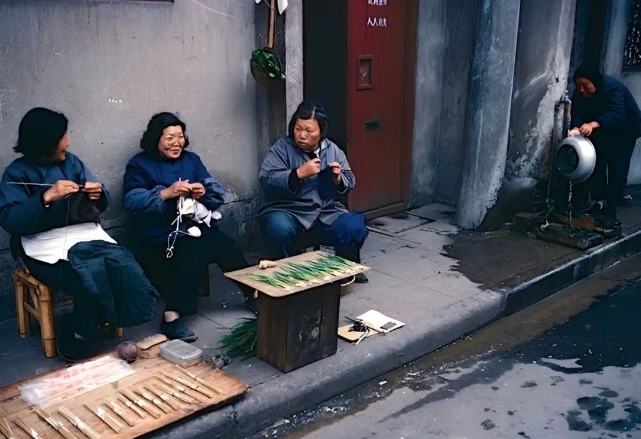 In the 1980s, on a narrow alley in Shanghai, several elderly women sat by the roadside, selling vegetables while knitting sweaters.
In the 1980s, on a narrow alley in Shanghai, several elderly women sat by the roadside, selling vegetables while knitting sweaters.
On their small stall in front, spring onions and bundles of dried noodles were neatly displayed.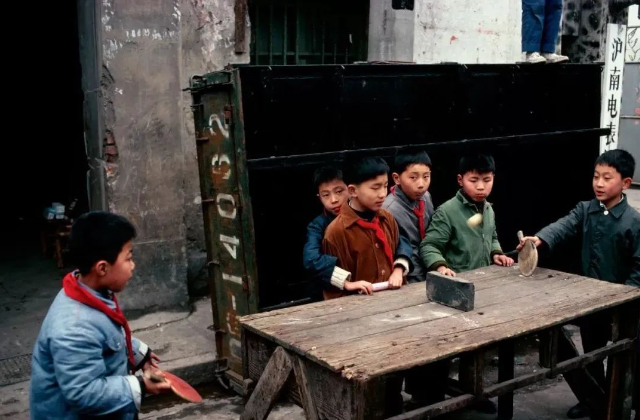 In the 1980s, outside the Hunan Electric Meter Factory in Shanghai, there stood a worn-out wooden table.
In the 1980s, outside the Hunan Electric Meter Factory in Shanghai, there stood a worn-out wooden table.
Children treated it as a makeshift ping-pong table, laughing and playing with joy.
Back then, childhood happiness was just that simple.
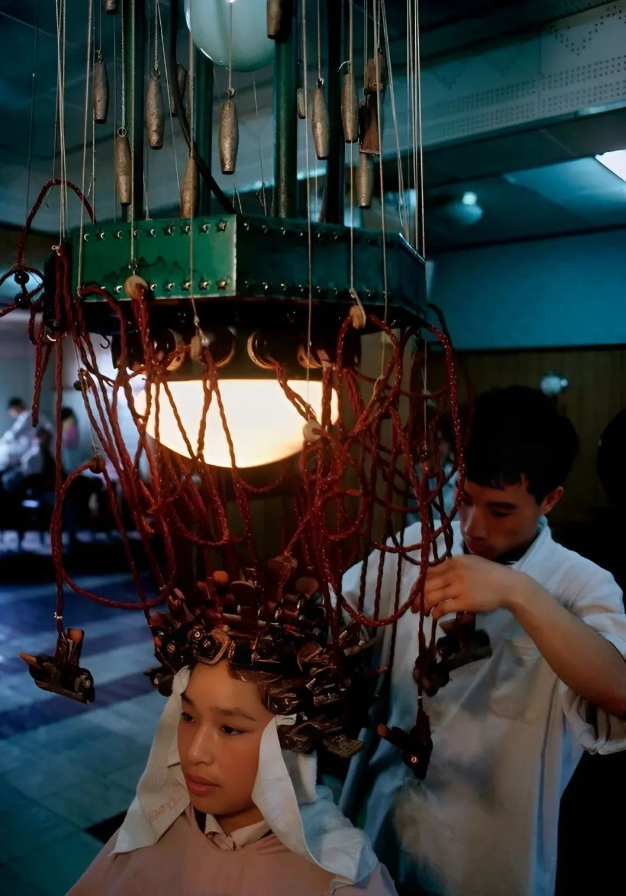 The love of beauty is universal. In 1980s Shanghai, fashionable women loved getting perms.
The love of beauty is universal. In 1980s Shanghai, fashionable women loved getting perms.
A head of beautifully curled hair was sure to turn heads on the street.
However, those perming machines have long since been phased out.
 In the 1980s, a couple was having their wedding portrait taken at a photo studio in Shanghai.
In the 1980s, a couple was having their wedding portrait taken at a photo studio in Shanghai.
At that time, Western-style wedding photography was becoming popular.
The groom wore a formal suit, and the bride was dressed in a beautiful white gown — truly a stunning sight!
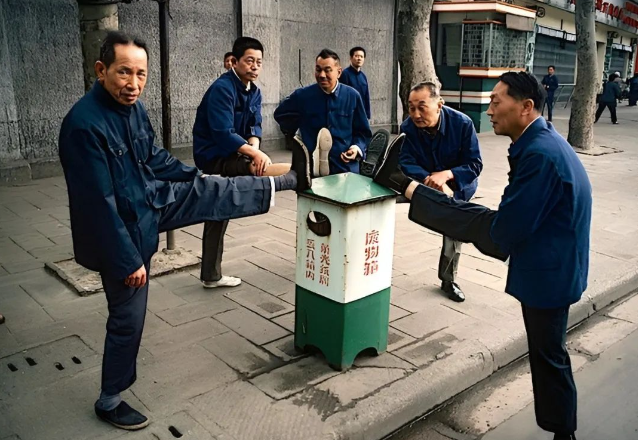 On the streets of Shanghai in the 1980s, a few elderly people were exercising.
On the streets of Shanghai in the 1980s, a few elderly people were exercising.
They lifted their legs and stretched by placing their feet on trash bins.
Back then, there was no access to modern fitness equipment, so people made do with what they had.
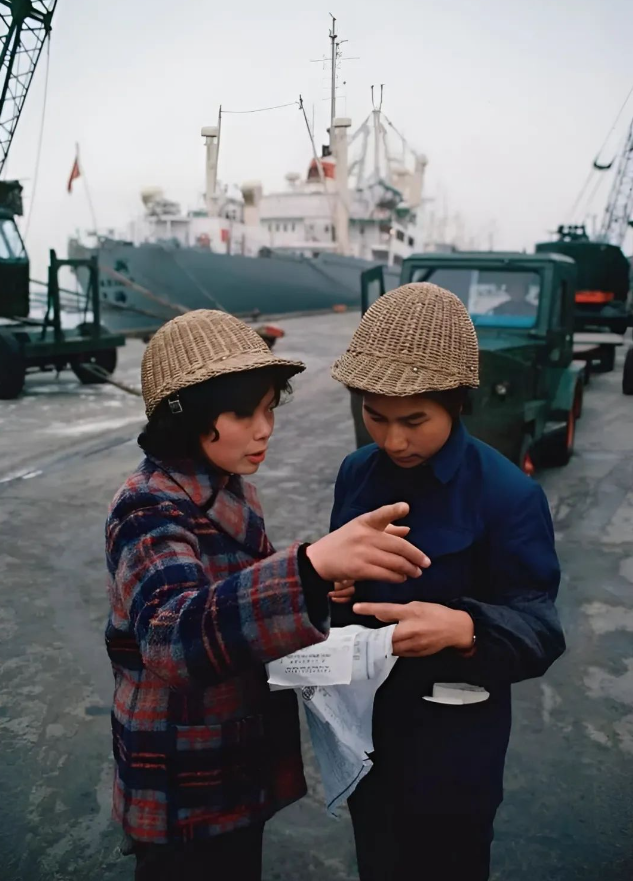 At a dock in Shanghai during the 1980s, two female workers were handing over a task.
At a dock in Shanghai during the 1980s, two female workers were handing over a task.
They wore safety helmets made of woven rattan.
Back then, people were full of energy, and women truly held up half the sky.
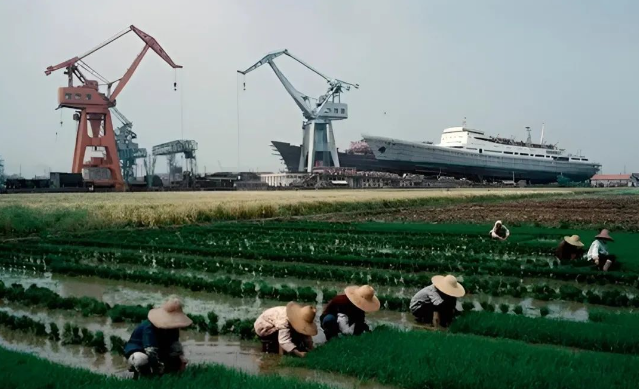 In the 1980s, children at a Shanghai school were playing Chinese checkers in a friendly competition.
In the 1980s, children at a Shanghai school were playing Chinese checkers in a friendly competition.
All of them wore red scarves, a symbol of the Young Pioneers.
One girl had a “double stripe” armband on her sleeve, indicating she was the squad leader of her Young Pioneers team.
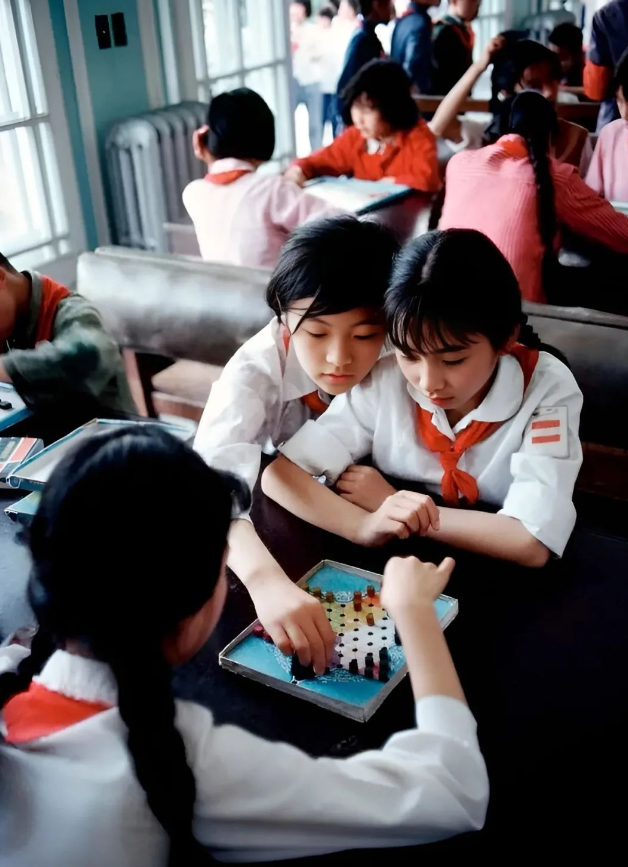 In the 1980s, on the streets of Shanghai, residents were practicing Tai Chi in the early morning.
In the 1980s, on the streets of Shanghai, residents were practicing Tai Chi in the early morning.
Behind them, a large propaganda mural boldly declared, “Seize every minute, race toward the year 2000.”
Time flies—it’s already 2025.
